Yesterday I was given the privilege of joining forum member (and head brewer) critch at his Liverpool Organic Brewery to participate in the brewing of a commercial summer ale. Although this isn't strictly my brew, I'll put this down as AG#3 simply because of the experience and the many things I learned from this fantastic opportunity.
It's an early start for a commercial brewer and I met critch at 7am to begin the brewday. He was already there and the brewery was already operating. This gave me the opportunity with critch's permission to take some pictures of his commercial setup. Its impressive.......VERY IMPRESSIVE!
The HLT was already full and heating the mash water when I arrived:
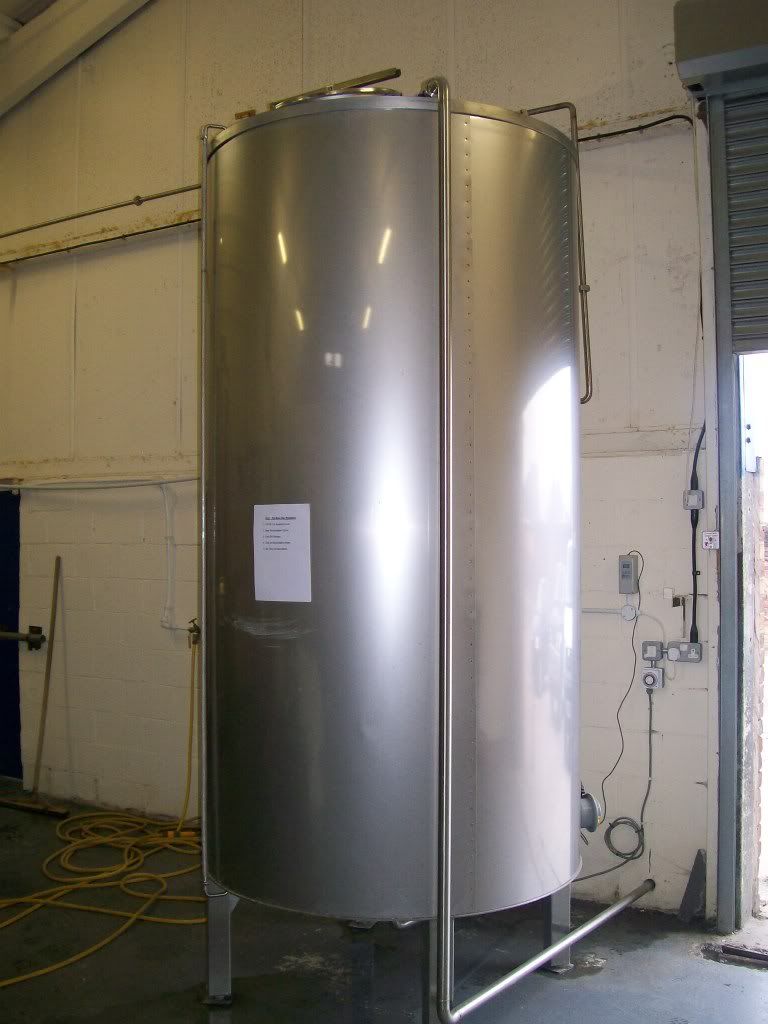
Critch informed me that today WE were brewing a "styrian summer ale" and the first task was to set out the ingredients for the brew. This is critch's recipe so I won't state exact quantities of any of the ingredients (intellectual property and all that) however, the basis of the brew was pale and wheat malts, bittered with Centennial and flavoured with Bobek (and a few others)
Here are the base malts. 300 odd kilo's of it!!!
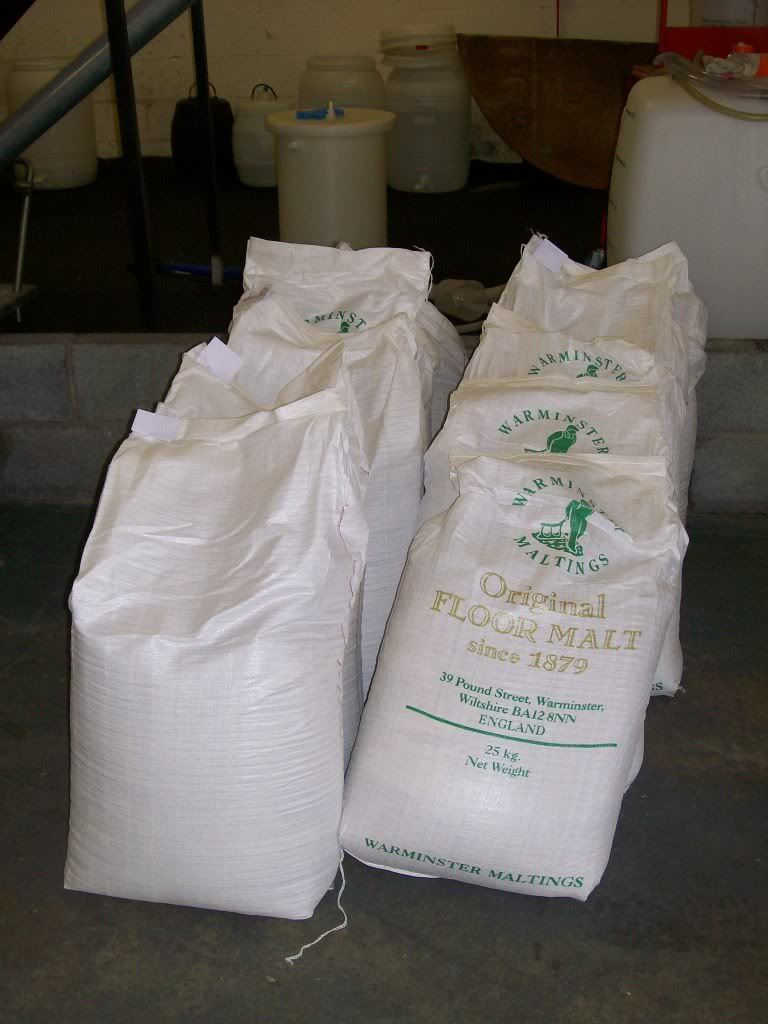
To the grist a quantity of dry liqour salts was added and mixed. Critch told me that Murphy's have done a water profile for him and calculated the precise quantities required for this style of beer.
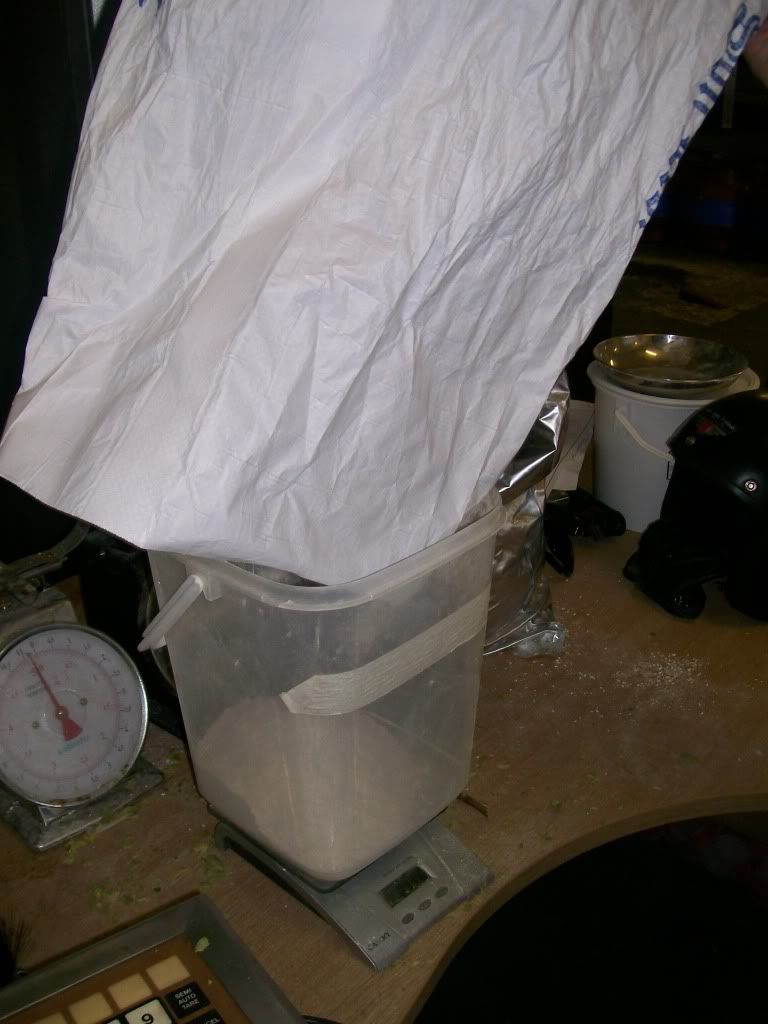
The grist was then emptied by hand into a mechanised hopper:
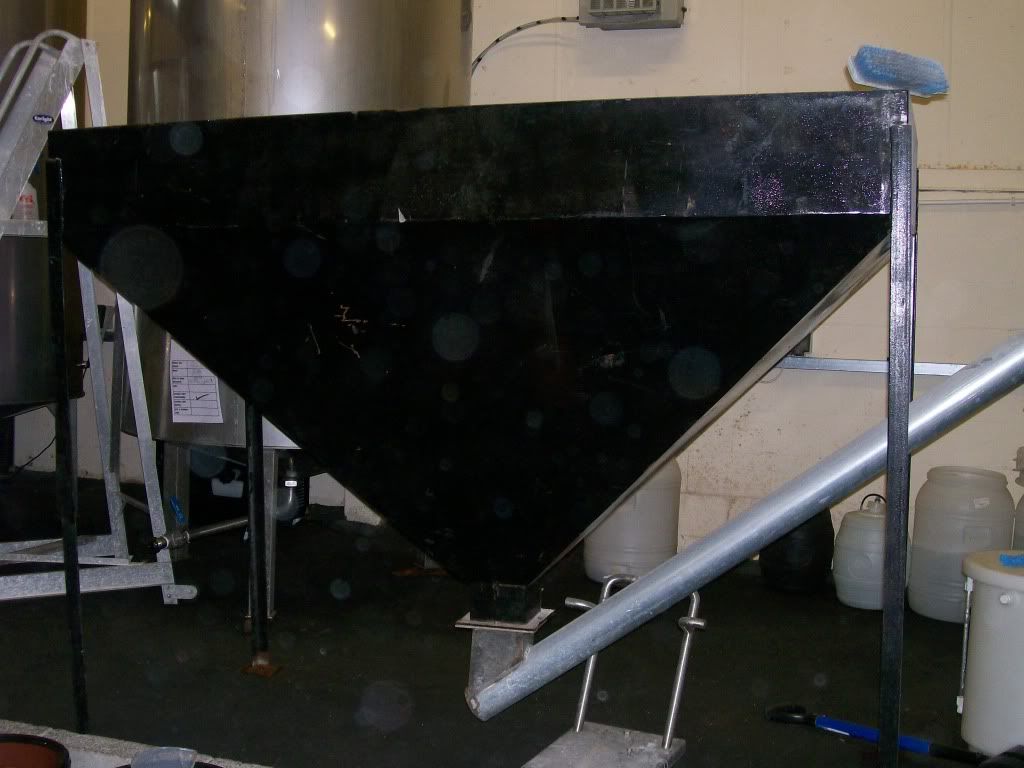
Here, the total grain bill (plus salts) is in the hopper:
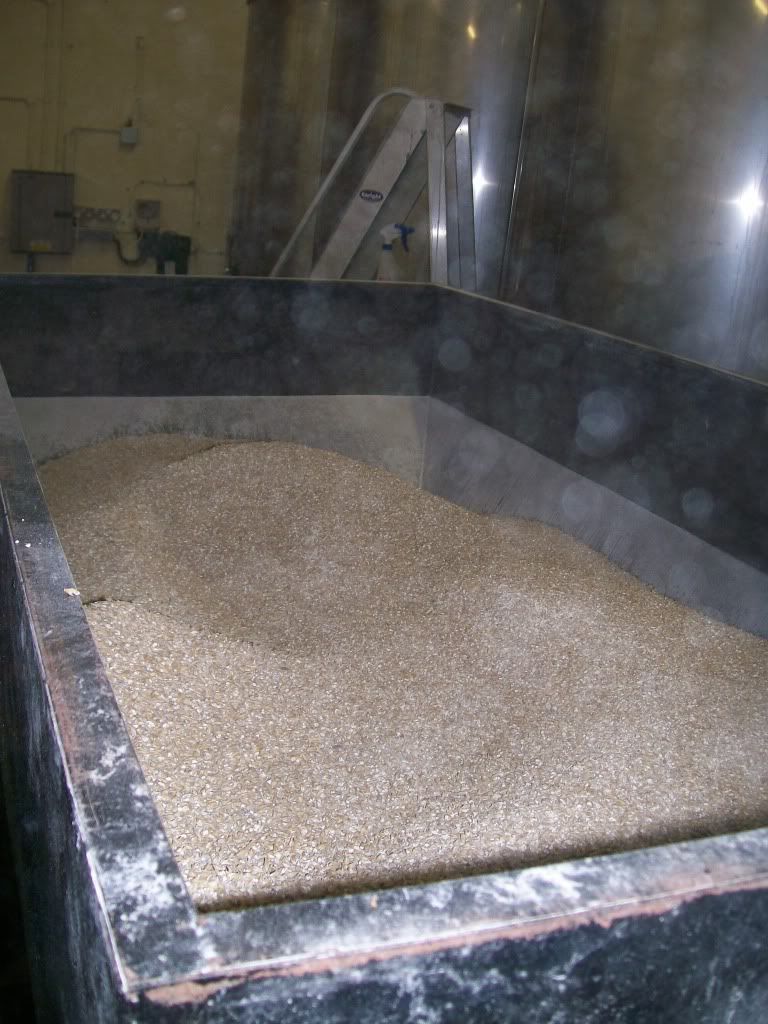
Ready to transfer into the stainless steel insulated mash tun (makes my cool box look a bit lame!)
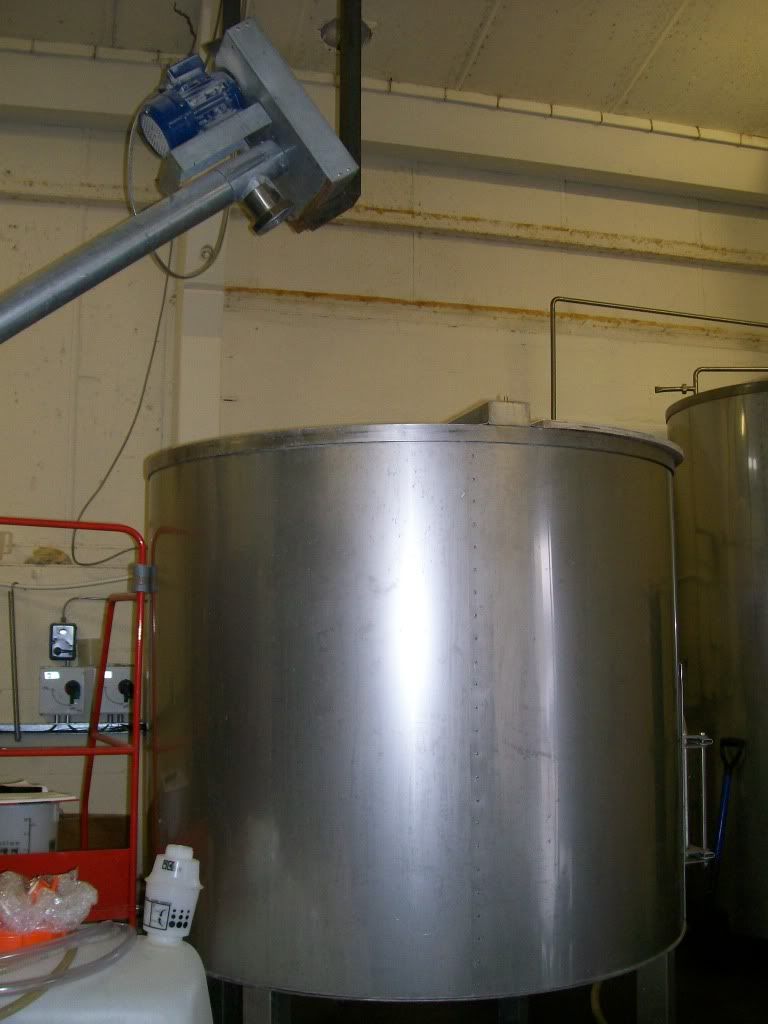
In the style of a '60's hammer house of horror movie, critch began flicking switches and opening valves.......The mash tun filled with liquor and the hopper fed the grain into the tun.
The grain was also part mixed with liquor as it dropped into the tun from the hopper to aid mixing and mash consistency:
The grain part mixed with liqour, dropping into the tun....
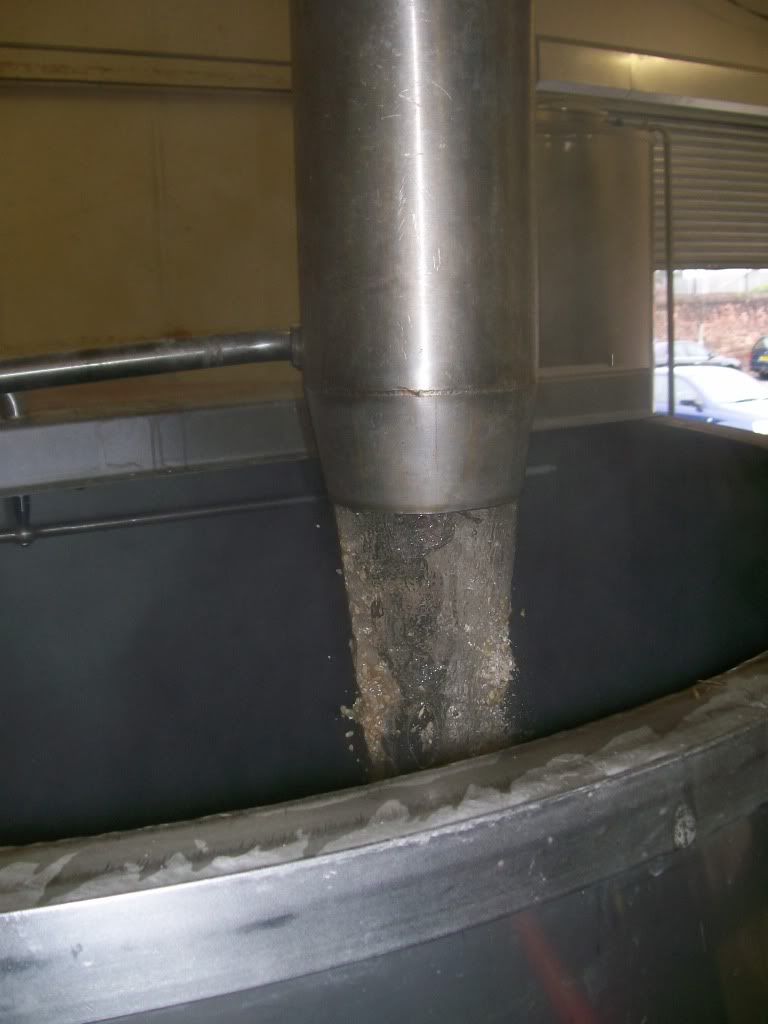
Critch then doughed in and sealed the vessel for the desired mash time (60 mins)
With some time to spare, barrels from the previous brewday (about 32) needed moving into cold storage:
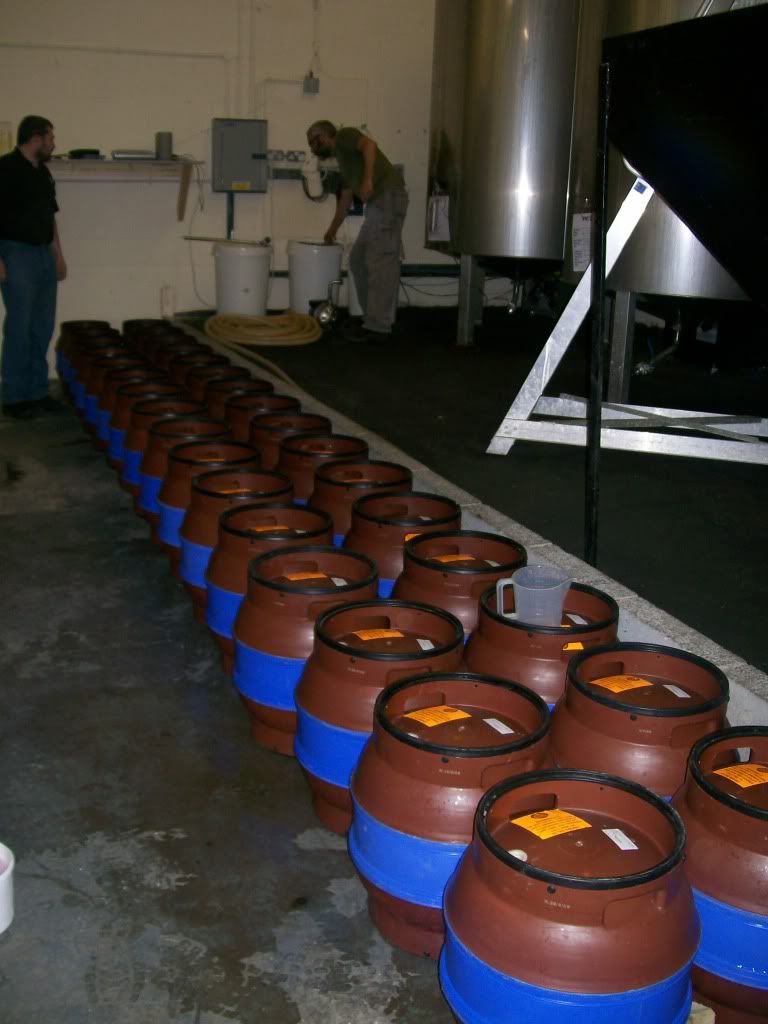
The cold store, where beer (and other consumables) are stored, prior to shipping out to the customers:
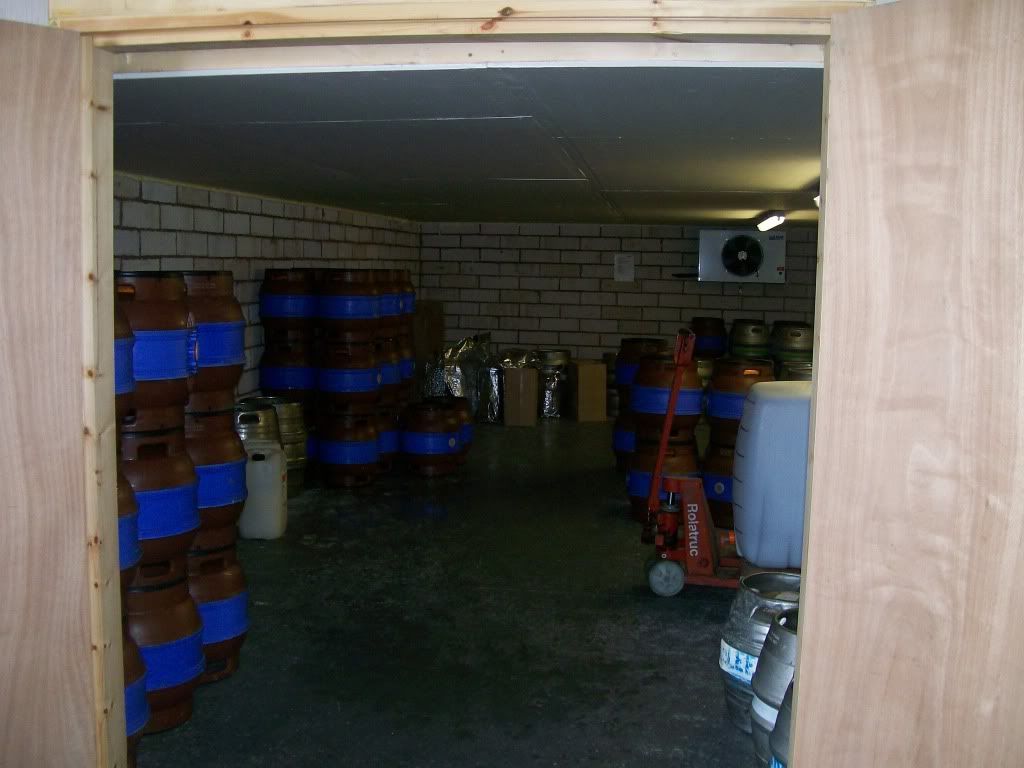
Once completed, the next task was to weigh out precise quantities of bittering, aroma and steep hops (together with copper finings etc)
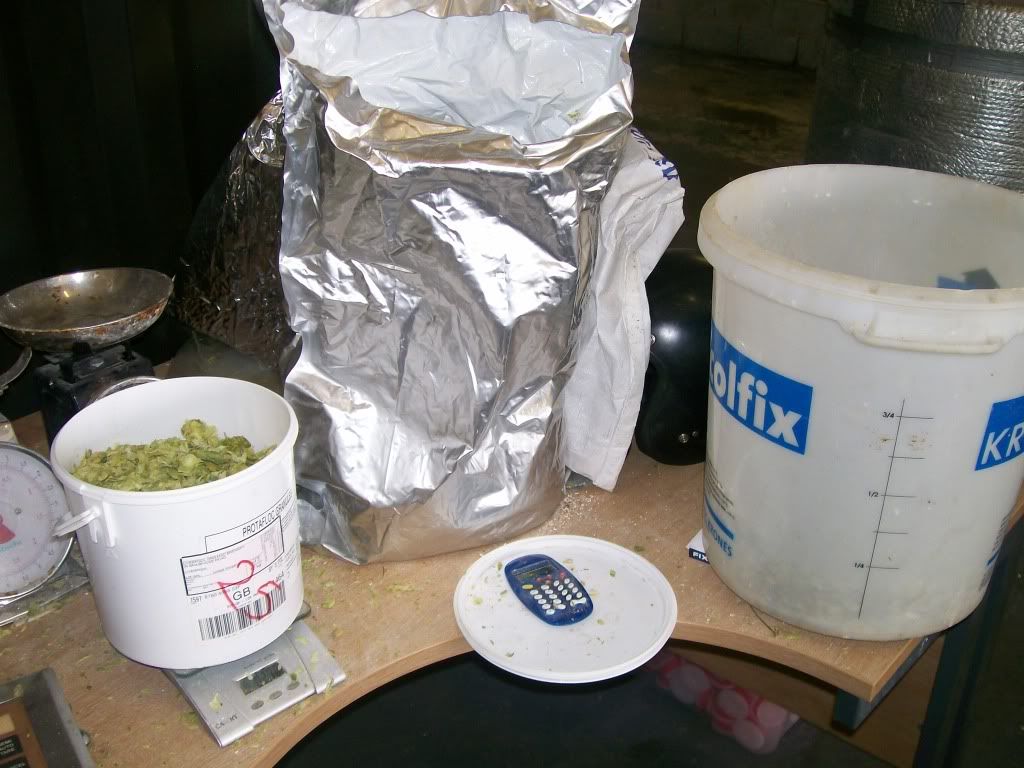
Once the mash time had elapsed, yet more switches and valves were thrown and sparging commenced (no photos here.... too dangerous with the steam and hot water spraying over the grain bed)
Critch attached an underback to the tun to collect first wort runnings:
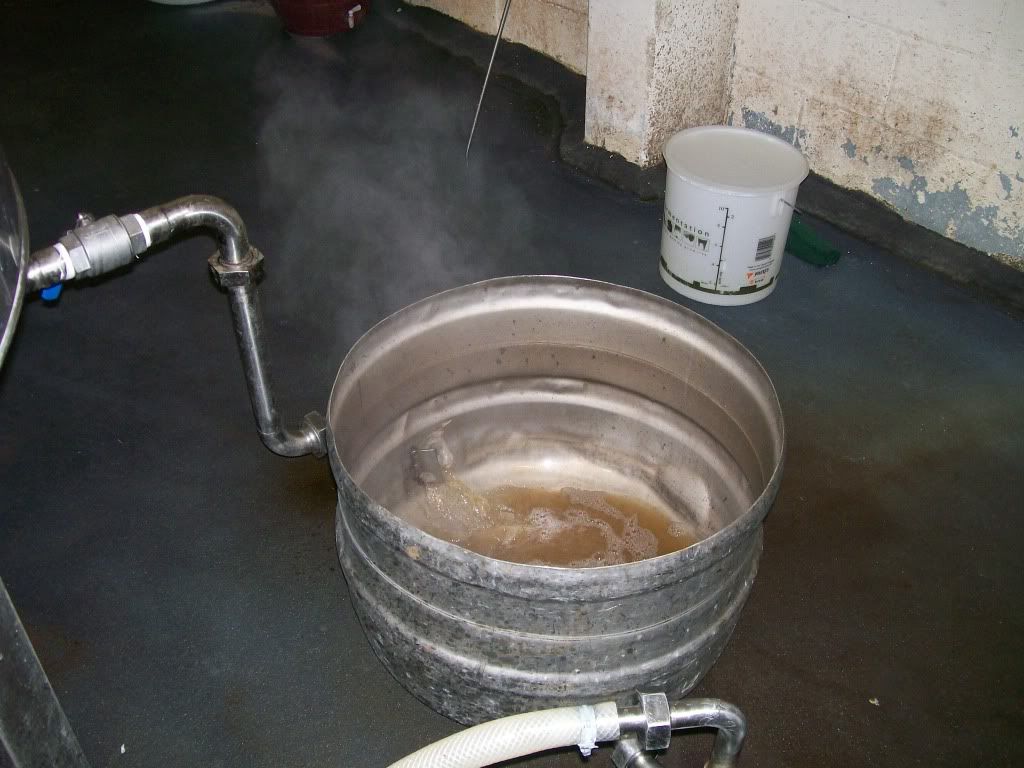
The first turbid runnings are recirculated into the mash:
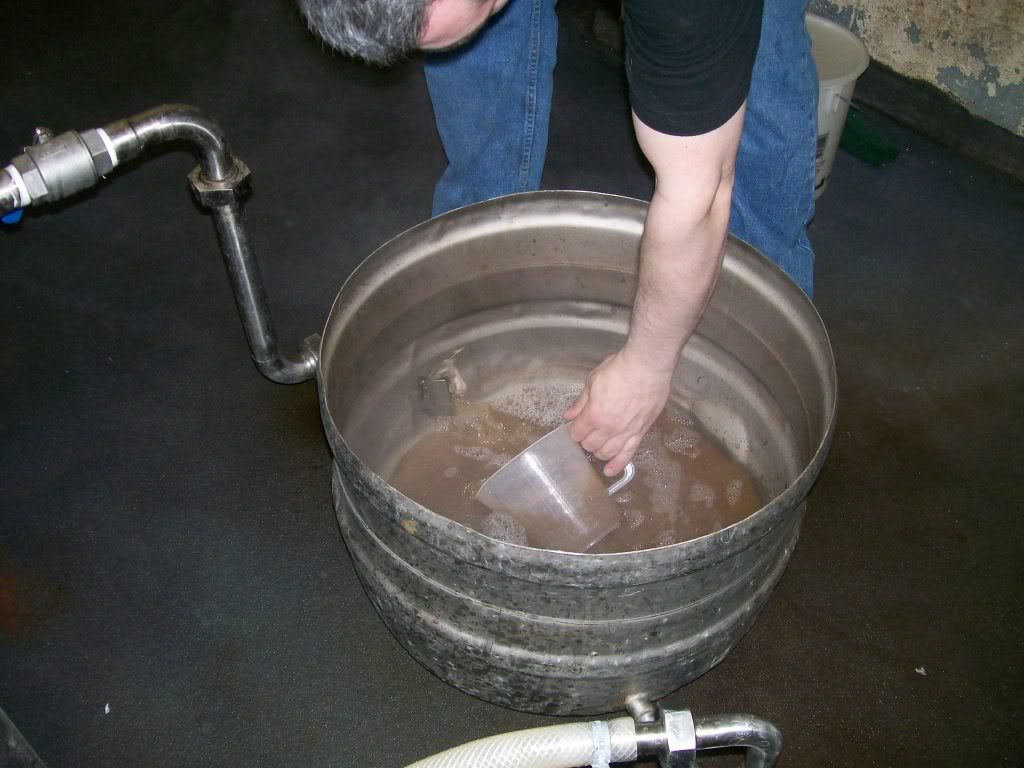
Once the wort runs clear, it is fed into the copper via an industrial scale totton type pump:
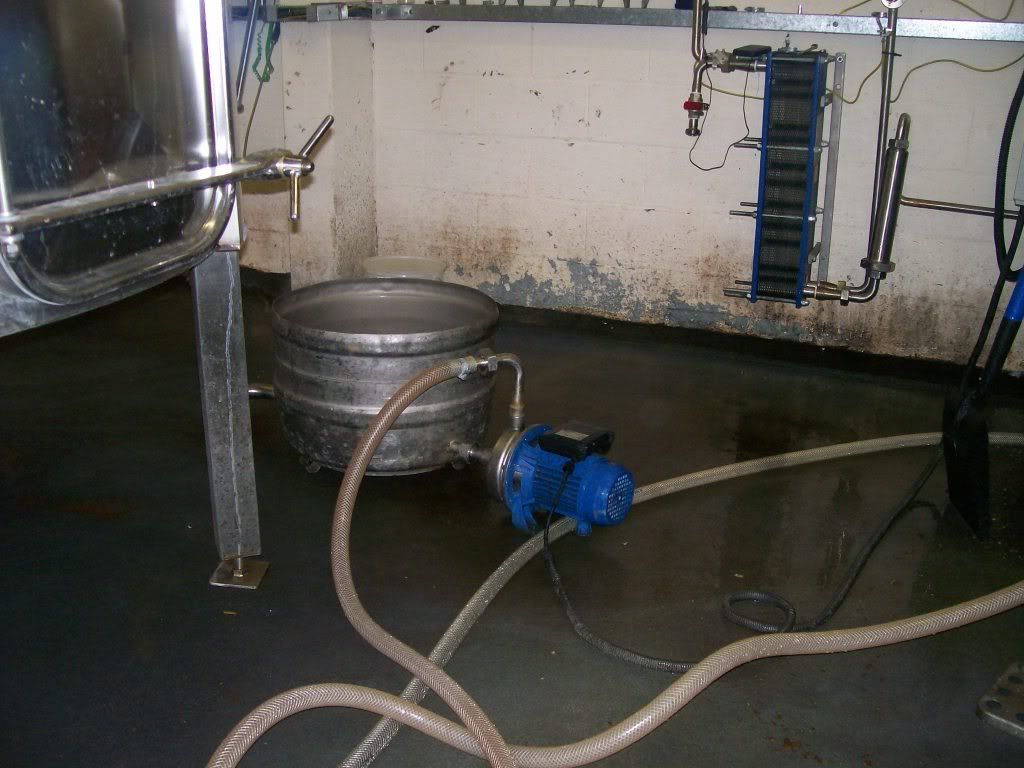
At this point a brew monkey is needed to control the pump feed to the copper to stop the underback from overflowing. Yes you guessed it!
This took an hour and a half of throttling the flow back and forth to fill the copper:
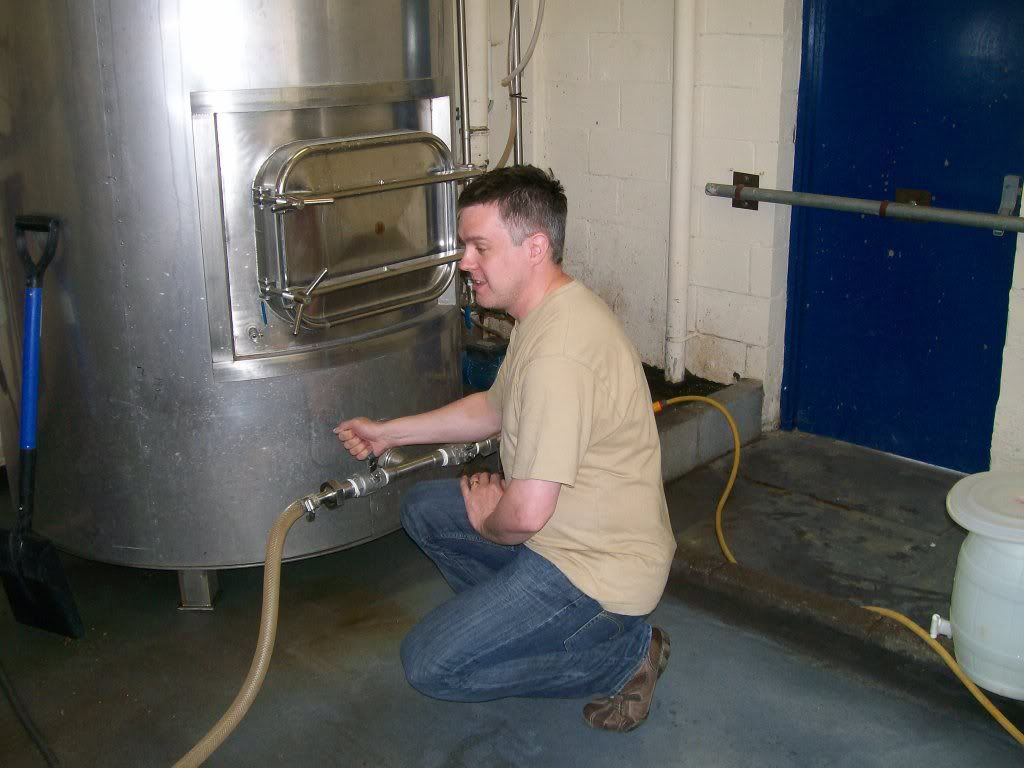
Once the wort covered the elements, critch flicked the power switches on to start the boil.... After the sparging ended, the temperature was measured and once the boil had started (copper up) the bittering hops were added:
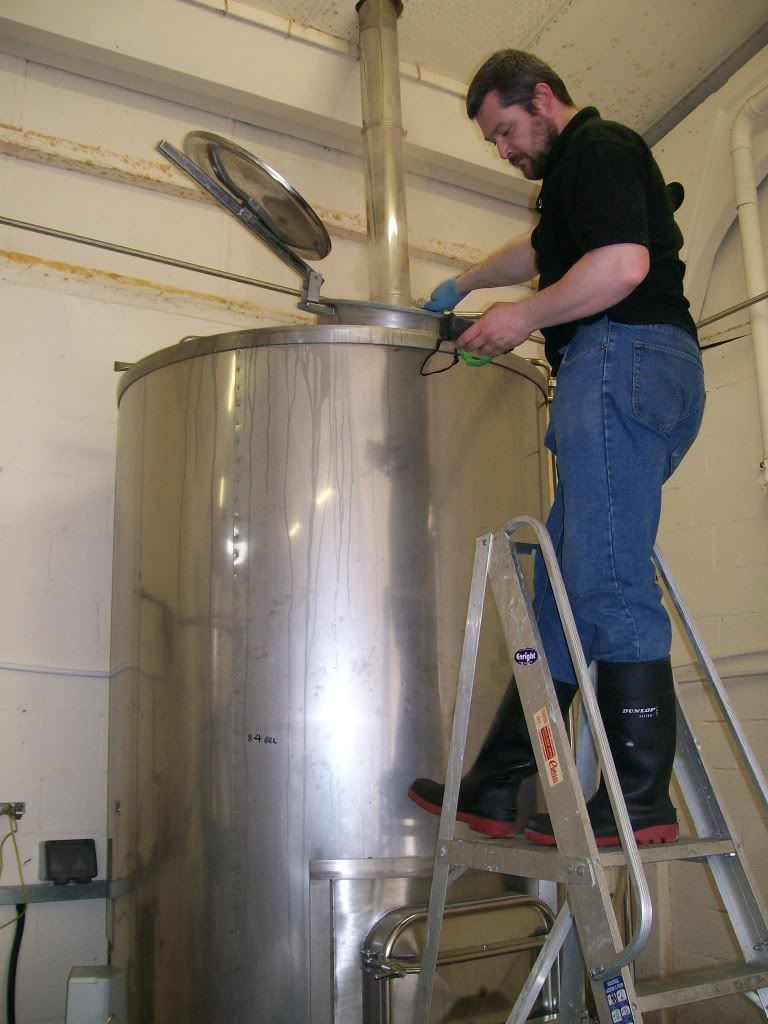
Now the boil was underway, time for more graft as the spent grains from the tun needed to be emptied.
The draff (a bit more than I get from my cool box!)
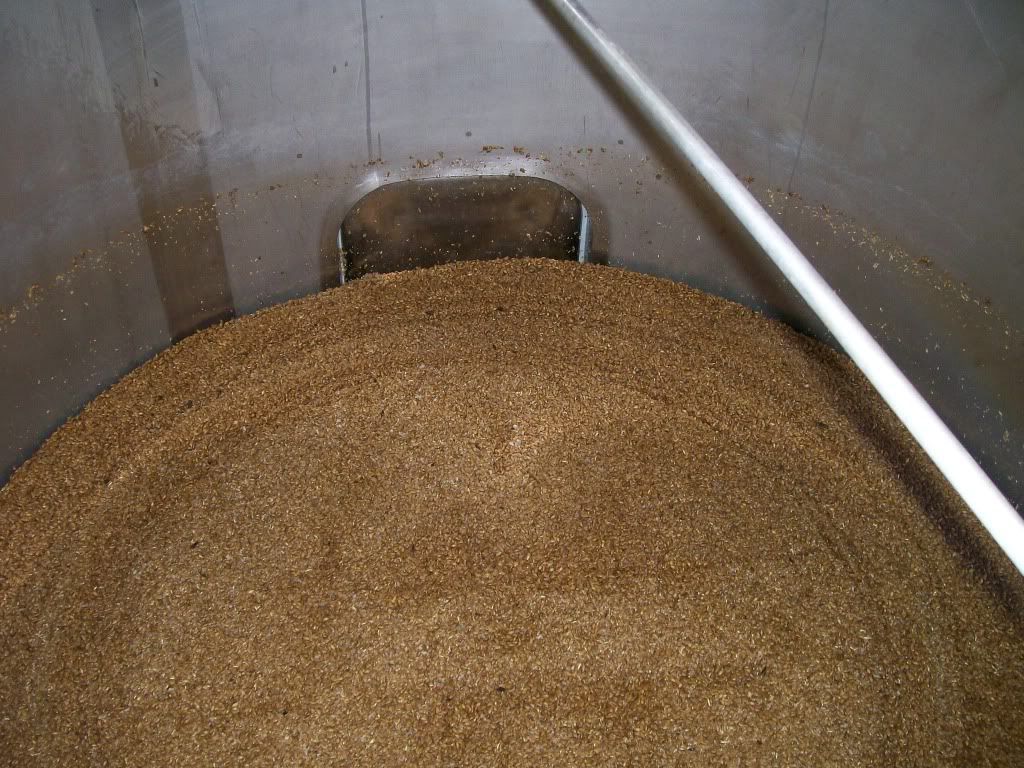
Pick up thy shovel and dig!!!
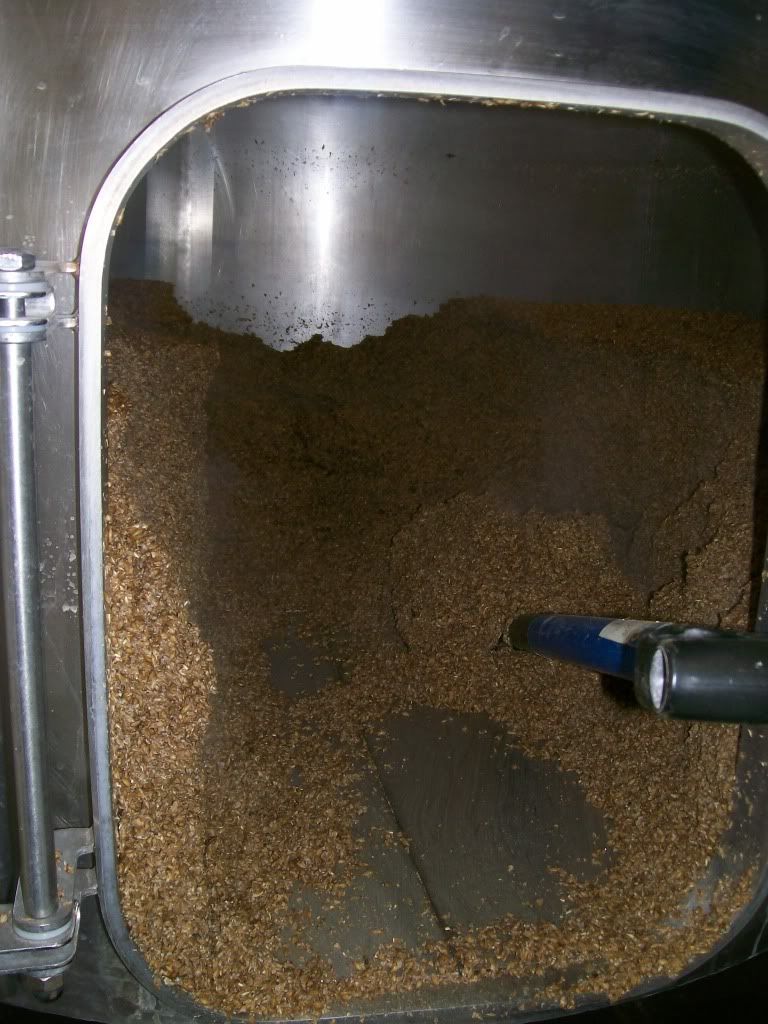
Spent grain weighs considerably more than dry.....critch bags it up and sends it to his local allotment society.
The tun is now washed down ready for the next brewday:
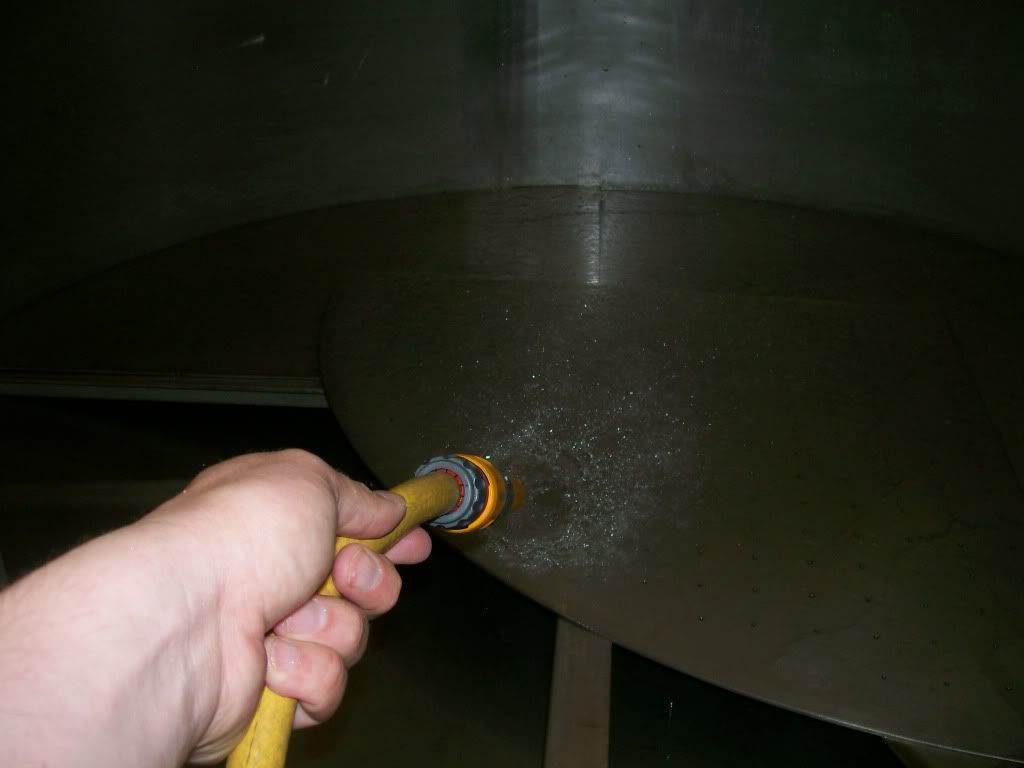
Once the boil was completed and the hopping schedule finished, the first few litres of hopped sweet wort was recirculated to clear down:
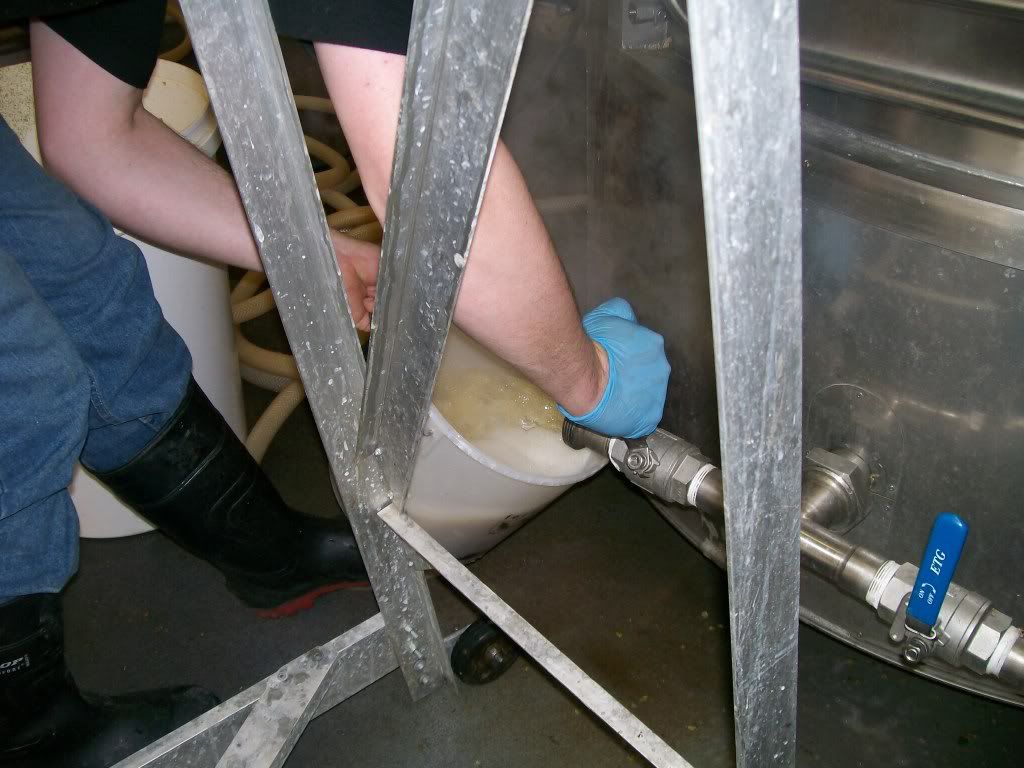
Once the wort was clear, it was passed through a monster plate chiller to cool the wort, prior to aeration/dropping into the FV:
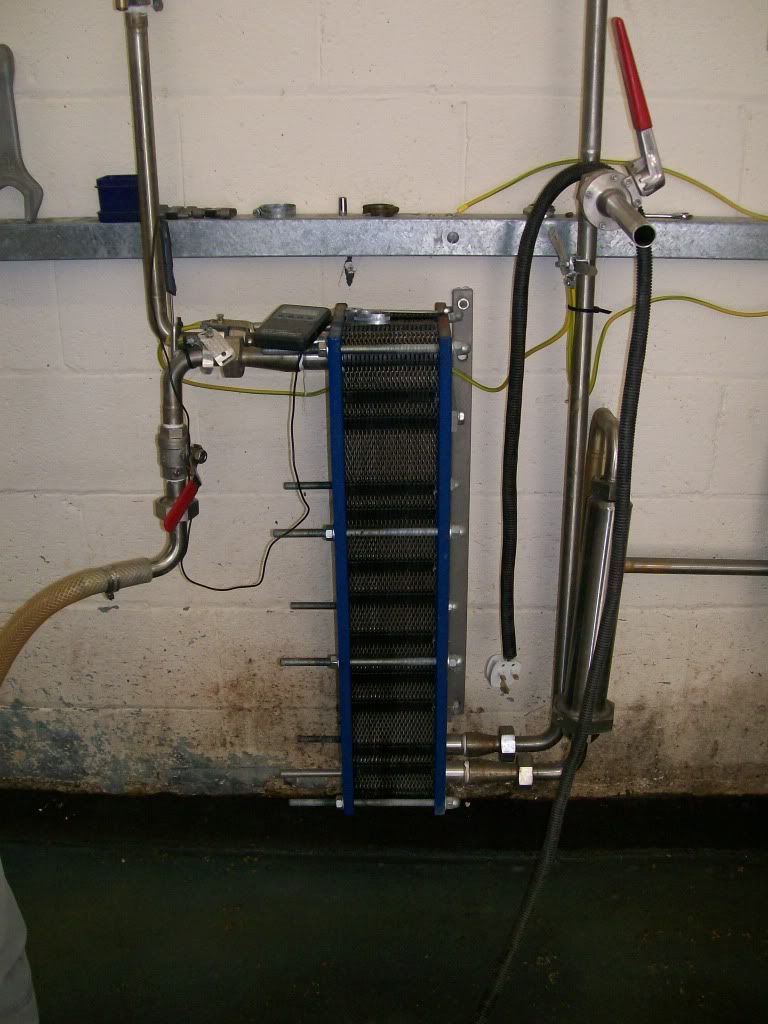
The temperature of the wort exiting the chiller was as read:
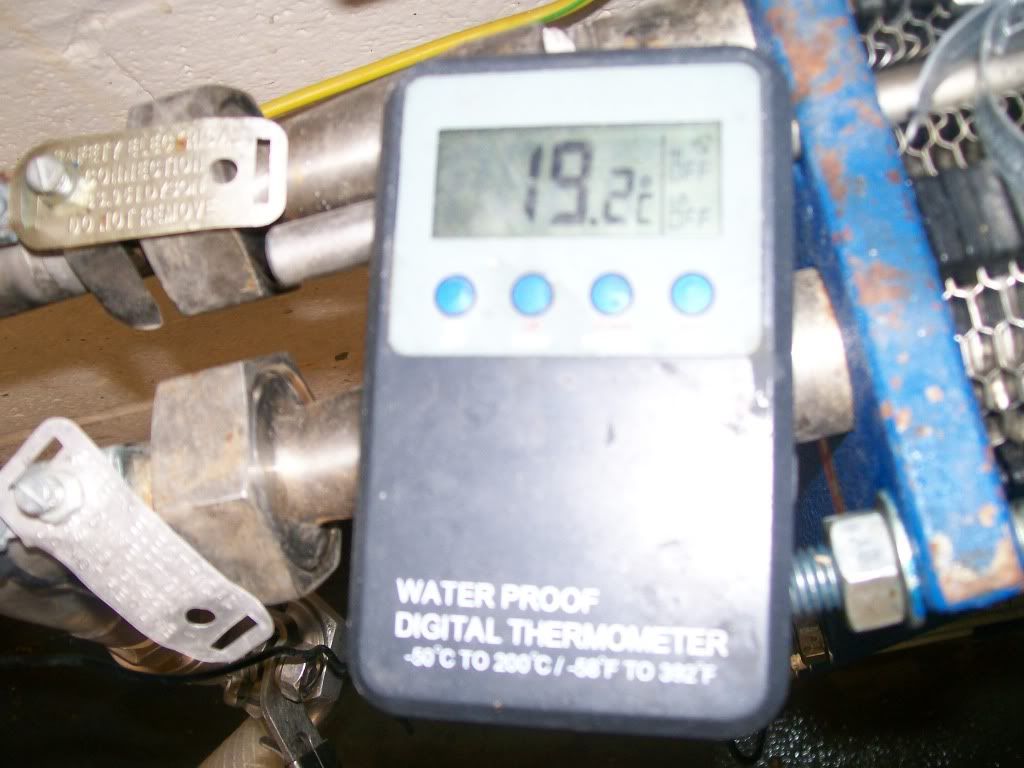
The now hot, cooling water is transferred back into the HLT (1st picture) ready for use as mash and sparge liquor for the next brew!
The cooled wort is now transferred into the Fv via a long stainless steel pipe with an aeration "flute" on the end and then pitched with the yeast of choice:
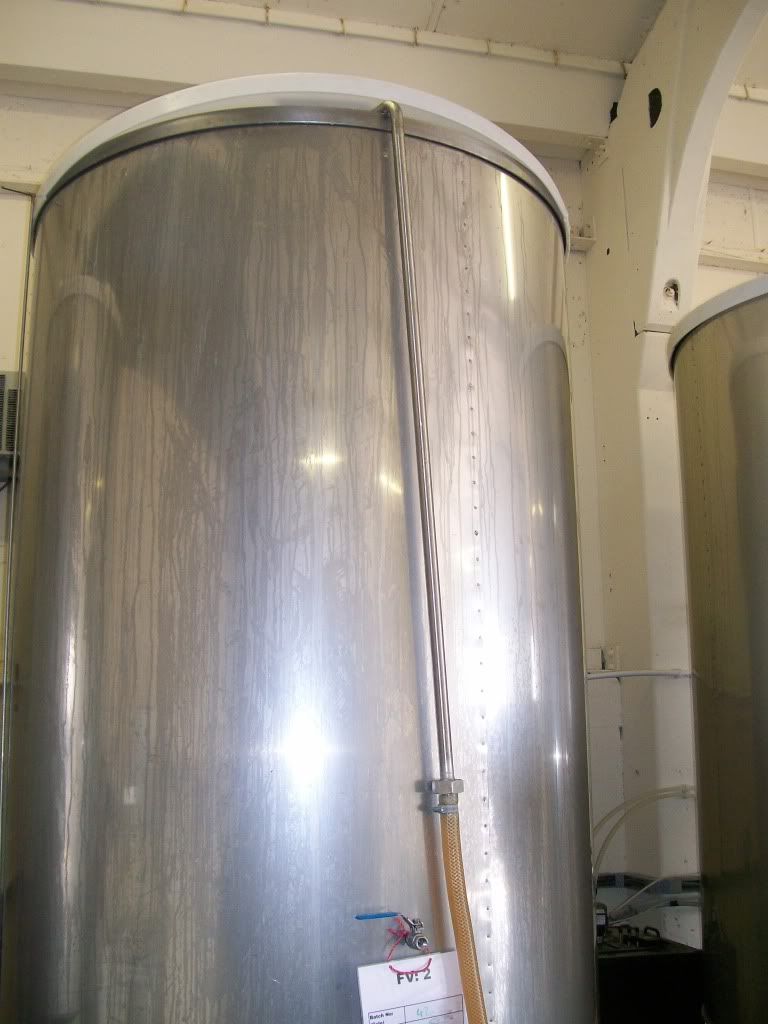
Her's one they made earlier (nearly finished fermenting and almost ready to go into the barrel)
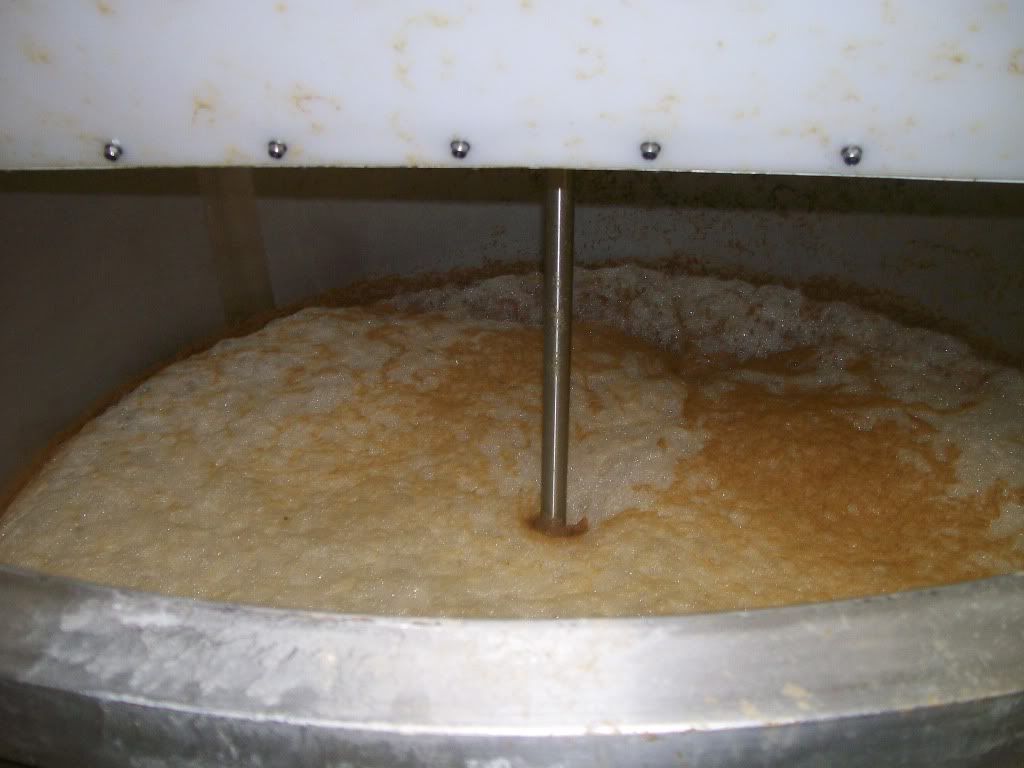
That was the end of my brewday here at the Liverpool Organic Brewery. I'd like to take the opportunity to thank critch and Mark (his business partner) for allowing me to spend the day here in a commercial environment, just to see how they do it (in real life!)
It's not really different to what we do........just on a much bigger scale. Brewing for business (not for pleasure) is hard work and the guys down here are doing a fantastic job (the end result is proof of that!!!)
I wish them every success for the future and hope the Liverpool Organic Brewery goes from strength to strength.
Cheers!
Kev

